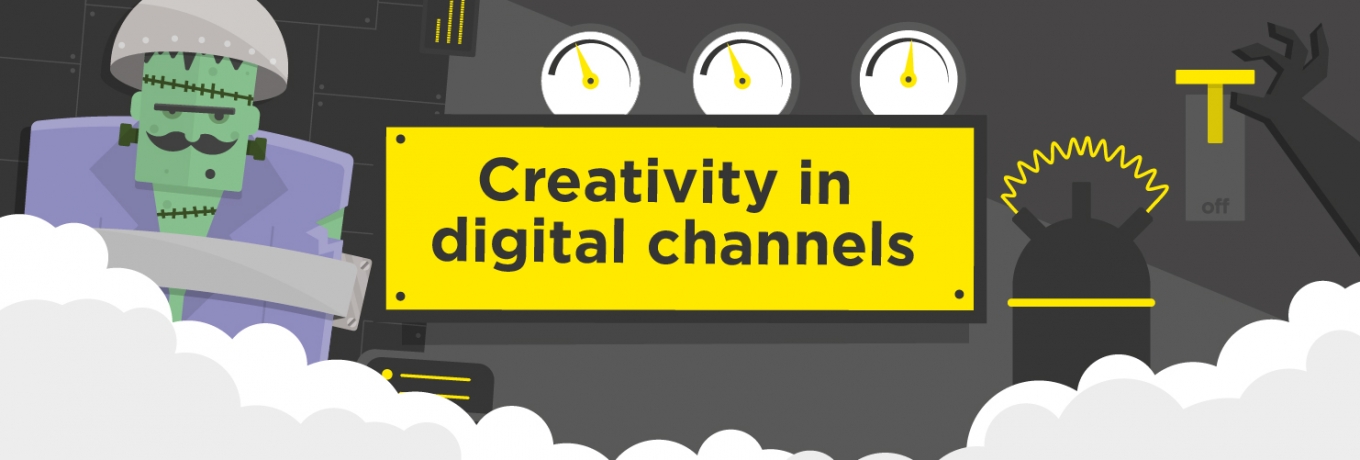How do you keep your digital channels alive in a busy workplace?…
We talk a lot about digital channels, platforms and tools like Workplace, Yammer and plenty of others – technology created to aid internal communication.
As superfans of creativity, we’re always keen to explore how communicators are keeping the content on these platforms stimulating and inspiring.
We were recently invited to run a table session at the #SmileLondon conference (Social Media in the Large Enterprise). Naturally, we started the conversation with some questions on creativity…
- What are communicators doing on digital that they consider to be creative?
- What keeps content sticky?
- And what can others learn from all this?
Here’s a summary and some tips shared during the conversation:
People and skills
Having a team of content creators can help with keeping things fresh, whether that be for audio, video, written or other or you can share the load and vary the output by empowering others in the business to get involved. To do this they’ll need the skills – do they know what makes a good Facebook Live video? How do they create a visual to support their post? What makes well written content?
How you can help: They may need some guidance from you. Create toolkits and pocket guides that will help with this. Include top tips, quick-fire suggestions and a list of useful resources along with details of where they can go for more information.
Consider a range of content types and formats including:
- Stories and storytelling in all formats (written, audio, video, animation, etc.)
- Video – decide whether a raw iPhone shot video will do or a bigger production is needed
- Animation
- Snackable content like 60 second stories (video)
- Live video
- TV show format
- Gamification – quizzes and rewards for action
- Gifs – particularly incorporating Senior Leaders
Working out loud
Encouraging a working out loud approach can be powerful. Documenting and sharing your work and the work of others helps everyone to understand what’s going on in the business. Sharing content that doesn’t normally get seen, the work that goes on behind closed doors, makes the work of leaders more tangible and understandable to all. One way to get creative with this could be to hire a visual note taker to visualise the next strategy meeting and share the results on your channels. It’s a great way to bring facts and figures to life, sharing direction in a bold and eye-catching way.
Name and brand it
When you commit to a regular comms activity, give it an identity and provide stakeholders with something to connect with. Name and brand it. Make it memorable (alliteration or theming works well here). Make it sound interesting even before anyone’s watched, listened to or read it.
Segmentation
As we know, one size fits all is not an approach you’re likely to be taking in comms, digital or otherwise. So take some time to think about how different audiences prefer to receive information.
- Know your stakeholders and audiences and tailor the approach appropriately
- Use the most suitable format, tone and creative approach
- Make content and messaging informal where possible.
Turn up the employee voice
With employee voice being a critical factor in the success or otherwise of an organisation, it’s important to spot opportunities to get creative with how you seek the views of your employees and allow stakeholders to influence decisions.
- Use your digital platforms to enable employees to share thoughts and opinions, suggest day-to-day improvements and contribute towards ideas and innovation
- Get employees involved in problem solving – a perfect example being the employee who uploaded an image of a broken IT kit and receives a direct response from the IT Director
- Champion the creation of user generated content from across the business like live blogging and video
- Encourage leaders and employees to take an informal approach and work out loud.
Tools matter, but so does your content
Having access to cutting-edge tools can be useful but you don’t always need high-end technological wizardry. With the right mind-set and a creative approach you can create interesting content from everyday software like PowerPoint – yes, you can! There are lots of other tools and apps to help you design creative visual content too – try Canva, Biteable, Animoto, Adobe Spark or Ripl.
How you can help: When encouraging others to generate content, create templates to help them get started. Encourage them to build on these templates rather than feel restricted by them. Make it easy by developing a suite of icons and graphics for them to use.
Top tips for your overall approach
- Think aboutcontent not channels
- Mix external and internal – borrow visual assets and content from both
- Having support from Senior Leaders who are active can have a massive impact – if they lead the way, others will follow
- Recognition – a simple ‘thanks’ or ‘well done’ from someone goes a long way
- Equally, it’s important to provide feedback, but in an appropriate and timely way. ‘Praise in public and criticise in private,’ says Kim Scott in Radical Candor. This approach applies online just as much as off.
In summary…
Ultimately, as consumers we all want to be inspired, stimulated, informed and entertained by the information we receive. Taking a creative approach is crucial when using digital and social channels in much the same way as it is with more traditional methods of communication. Time and effort is still required to create cut-through content that makes a connection.
Creativity and flair will always be required, because while we need to remain open and accessible, it’s not just about the shiny digital channels we continue to adopt, it’s what we do with them that counts.
















